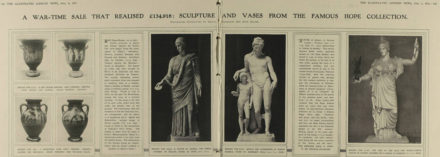Artist Ed Ruscha is one of the most significant American artists of the 20th century. Over his long career, Ruscha has played with the fluidity of language and the sublime in landscapes, and looked at advertising as a form, symbol, and material in painting. He also has produced one of the most significant artistic records of Los Angeles through his “Streets of Los Angeles” project.
The project has lasted over 50 years, producing over half a million photographs of the city in a systematic attempt to document major streets in LA, including Melrose Avenue, Pacific Coast Highway, and Sunset Boulevard.
The Getty Research Institute acquired the archive in 2011 and has been working to digitize the massive collection and make it accessible to both the public and scholars of history, art, architecture, urban studies, and more.
Ed Ruscha is a recipient of the 2019 Getty Medal for contributions to the arts. In this short video, hear about his work and impact from his brother and longtime collaborator Paul Ruscha, his studio manager Susan Haller, and Andrew Perchuk of the Getty Research Institute.
Transcript


ANDREW PERCHUK: Well, I think the Streets of LA Archive is probably the most significant artistic record of a city, certainly in the United States, and maybe in the world.
Ed doesn’t like being called either a pop artist or a conceptual artist, but his paintings of both words and things like gasoline stations, diners, were absolutely fundamental to our vision of what pop art is. And then his photo books, really helped define what a deadpan conceptual art was right at the beginning of that.
And he was systematically photographing the major streets and boulevards of LA from 1965 until today. What we have is an extraordinary record now numbering over half a million photographs of Los Angeles over a 55-year period.
PAUL RUSCHA: When I moved to California on June 25th, 1973, a week later, I went on the first shoot with Ed, in the back of his Datsun truck. And Ed had a formula which he did in a drawing, and we’ve kept to that formula, of a certain height where the lens is, the depth, and how much is to be shot, and how fast the truck has to go. And all of those things have been slightly modified, but basically it’s the same formula.
ANDREW PERCHUK: The key to the Streets of LA project is really access, because these hundreds of thousands of photographs that document LA changing over the decades have really been locked away, in accessible to scholars, inaccessible to the general public, inaccessible even to Ed Ruscha.
ED RUSCHA: The work that I’m—that I have done that is now in that archive is not finished. And I continue to explore that same technique of going out on the streets and recording the streets.
ANDREW PERCHUK: Well, it’s been interesting working with Ed on the project, because he’s been extremely excited to see these images come to life through digital means.
For that reason, it’s a living organism and it’s not a, it’s not a—there’s no cutoff date on it and it’s got very vivid possibilities.
SUSAN HALLER: I think that it really is reflective of who Ed is as a person that he has made this available to so many people. And what a gift it is to not only art history, but the history of L.A. And that’s remarkable and says everything you need to know about Ed.
JAMES CUNO: The Getty is proud to house Ed Ruscha’s archive of the Streets of Los Angeles and to name him a 2019 J. Paul Getty medalist.
ED RUSCHA: I mean the Getty is a great place on all levels. And so, the idea that these street shoots and these avenues that I’ve done go there is, uh, quite, quite an experience.
ANDREW PERCHUK: Well, I think the Streets of LA Archive is probably the most significant artistic record of a city, certainly in the United States, and maybe in the world.
Ed doesn’t like being called either a pop artist or a conceptual artist, but his paintings of both words and th...




Ed’s thinking has always been expanding from the start. Always ongoing. The various mediums flow together, overlap, redirect yet all hold the same DNA. Truly an original whose mind and work shape our understanding of ourselves , our times, while the work continues to grow with time. In a place and time that another city, more developed, less able to change due to their histories could not accommodate.
LA is in constance flux and Ed has been able to ride that animal for the last 50 years.
The work, particularly when seen in the “Streets of LA “is the direct descendent of Thomas Cole’s “Course of Empire” and will remain in that plateau
Hi —
Wow – amazing – did not realize until I saw this how extensive the project is.
Is the archive available to the public yet?
I have about 60 small photographs of Wilshire Blvd – that need some restoration – that I believe are probably part of this. ( several blocks) Mounted on 4 cardboard strips. ( by Danna Ruscha )
(this is from pre-production on a film I made – and she was involved at the time )
Is it possible to check somehow – for this area of town – and confirm that?
Some buildings are gone now — The Broadway ( Coulters originally )
In the 80s.
thanks for any info —
Steve De Jarnatt